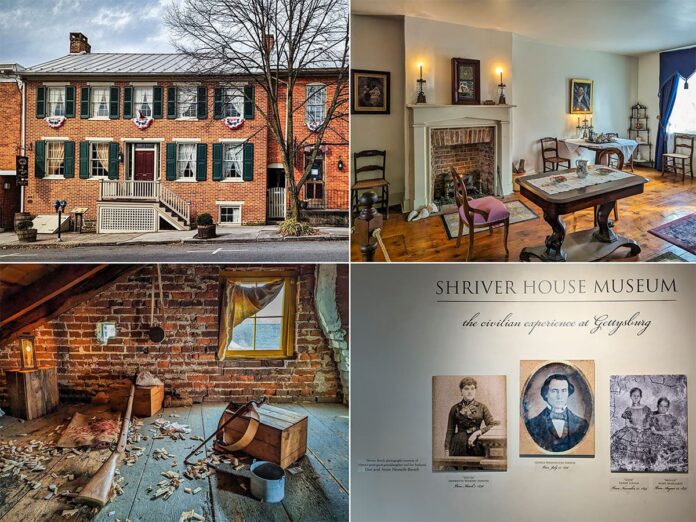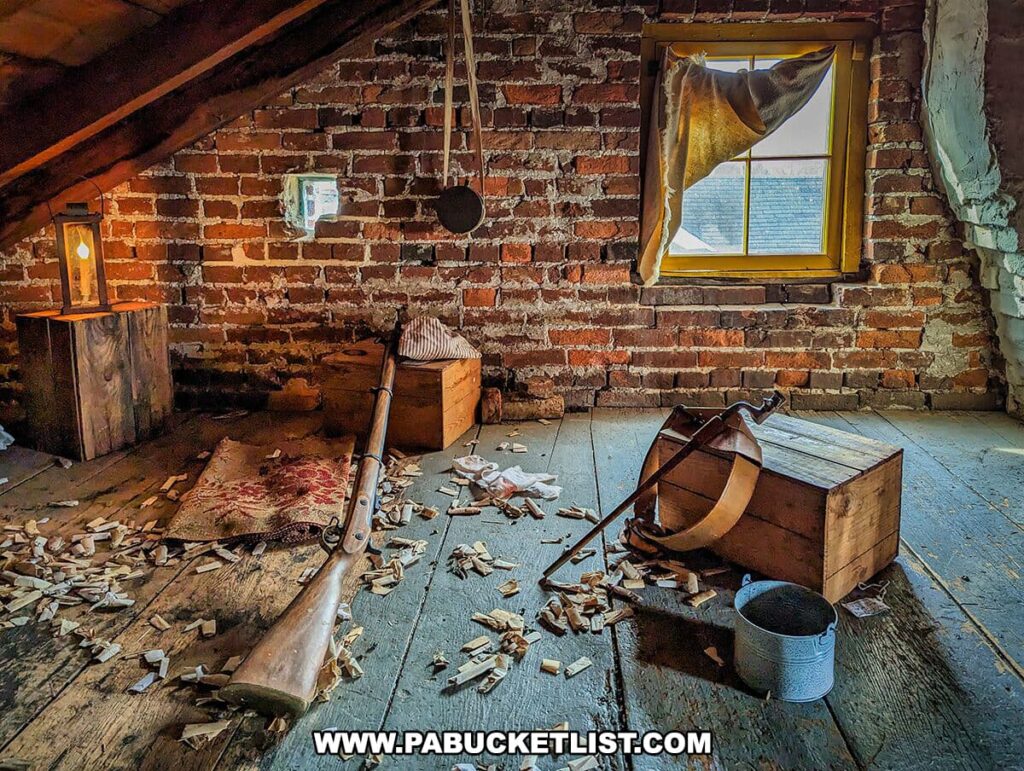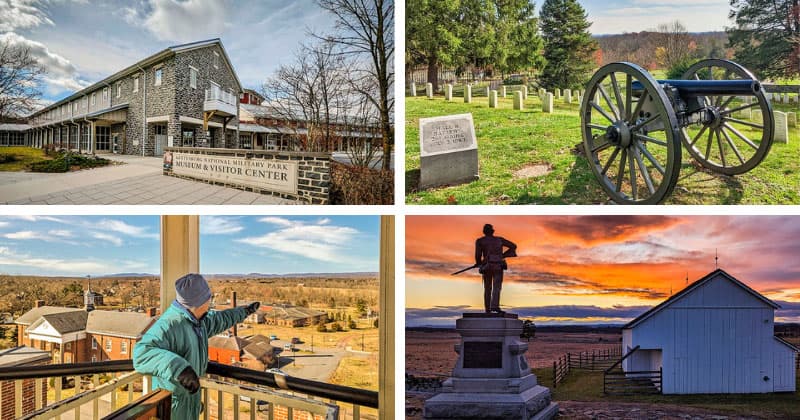
If you’re looking for information about visiting the Shriver House Museum in Gettysburg, you’re in the right place!

The Shriver House Museum depicts the remarkable story of one Gettysburg family’s life that was forever altered by the Battle of Gettysburg and the Civil War.

Set in a meticulously restored home first built by George Shriver in 1860, it provides an intimate glimpse into the world of the Shriver family as they journeyed through the turbulent times of the American Civil War.

Directions | Hours | Admission Fees
The Shriver House Museum is located at 309 Baltimore Street, Gettysburg, Pennsylvania 17325.
The Shriver House Museum is closed in January, open select weekends February and March, open 7 days a week April through October, and open select weekends November and December.

Hours vary by season – please check the Shriver House Museums’ OFFICIAL WEBSITE for the most up-to-date hours and to buy tickets.

Admission fees are: Adults: $11.95 | Youth (ages 7-12): $8.75.

What You’ll See at the Shriver House Museum
As you walk through the Shriver House, you’ll find each room meticulously frozen in time, accurately furnished to its 1860s appearance.

From the family’s living quarters to the unique basement business, the Shriver House Museum stands as a poignant symbol of the era, offering insights into the everyday lives of ordinary people caught up in extraordinary circumstances.

Historical Backstory
In 1860, just months before the Civil War erupted, George Shriver constructed one of the finest homes in Gettysburg.

This house served not only as a family residence but also housed George’s business ventures, including ‘Shriver’s Saloon & Ten-Pin Alley’.

George Shriver’s plans were put on hold when he volunteered for the Union cavalry on August 27, 1861.

Nearly two years later, with George still off fighting for the Union, Confederate forces swept into Gettysburg on July 1, 1863, commandeering the Shriver House and turning the attic into a sniper’s nest.

When the Confederate forces finally retreated from Gettysburg after 3 days of battle, George’s wife Hettie and her children returned to their home to try and pick up the pieces and rebuild their lives.

How that all works out is a story best left to the tour guides, who narrate the gripping story of the Shriver family in a compelling way.

Visitors to the Shriver House will witness firsthand the devastation left behind by the battle.

The marks of war are evident throughout the property, providing a stark illustration of the conflict’s impact on civilian life.

Visitors will also see hundreds of items discovered during the restoration of the home, including Civil War ammunition and medical supplies.

Final Thoughts
The Shriver House Museum offers a unique and intimate look at the civilian experience during the Battle of Gettysburg.

Its authentic restoration, engaging tours, and educational value make it a standout destination for anyone interested in American history.

It serves as a poignant reminder of the past, bringing to life the stories of those who lived through one of the nation’s most tumultuous times.

Nearby Attractions
The Jennie Wade House is a historic landmark and museum that memorializes the life and untimely death of Jennie Wade, the only civilian killed during the Battle of Gettysburg.

The Gettysburg Museum of History is home to thousands of unusual artifacts and atypical antiquities from American history, and admission is FREE!

The Seminary Ridge Museum interprets the history of the Battle of Gettysburg from the museum’s setting inside a building which served as both an observation post and a hospital during and after that battle.

Exploring the Gettysburg Beyond the Battle Museum is your guide to Gettysburg’s newest history museum, which tells the stories of local residents before, during, and after the epic Civil War battle that took place there.

The Gettysburg Diorama & History Center recreates the famous Civil War battle using one of the largest military dioramas in the United States.

12 Must-See Attractions in Gettysburg is your guide to even more great things to see and do near the Shriver House Museum.

Did you enjoy this article?
If so, be sure to like and follow PA Bucket List on Facebook, Instagram, and/or Pinterest to learn more about the best things to see and do in Pennsylvania!
Click on any of the icons below to get connected to PA Bucket List on social media.


